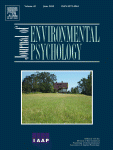40-second green roof views sustain attention: The role of micro-breaks in attention restoration
- a School of Ecosystem & Forest Sciences, University of Melbourne, 500 Yarra Boulevard, Richmond, 3121, Victoria, Australia
- b School of Ecosystem & Forest Sciences, University of Melbourne, 221 Bouverie Street, Parkville, 3010, Victoria, Australia
- c Department of Management and Marketing, University of Melbourne, Level 10, 198 Berkeley Street, Carlton, 3010, Victoria, Australia
- d Melbourne School of Psychological Sciences, University of Melbourne, Redmond Barry Building, Parkville, 3010, Victoria, Australia
- Received 1 February 2015, Revised 11 April 2015, Accepted 17 April 2015, Available online 2 May 2015
Highlights
- •
Neuroscience techniques provide direct empirical support for attention restoration theory.
- •
A micro-break viewing a green, but not concrete roof city scene, sustains attention.
- •
The green roof city scene perceived as more restorative than concrete roof city scene.
- •
Results suggest city nature is valuable for healthy cities and workplaces.
Abstract
Based on attention restoration theory we proposed that micro-breaks spent viewing a city scene with a flowering meadow green roof would boost sustained attention. Sustained attention is crucial in daily life and underlies successful cognitive functioning. We compared the effects of 40-s views of two different city scenes on 150 university students' sustained attention. Participants completed the task at baseline, were randomly assigned to view a flowering meadow green roof or a bare concrete roof, and completed the task again at post-treatment. Participants who briefly viewed the green roof made significantly lower omission errors, and showed more consistent responding to the task compared to participants who viewed the concrete roof. We argue that this reflects boosts to sub-cortical arousal and cortical attention control. Our results extend attention restoration theory by providing direct experimental evidence for the benefits of micro-breaks and for city green roofs.
Keywords
- Green roof;
- Urban greening;
- Attention restoration;
- Directed attention;
- Work breaks;
- Sustained attention
Copyright © 2015 Elsevier Ltd. All rights reserved.


